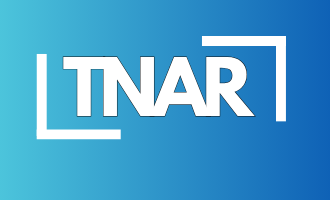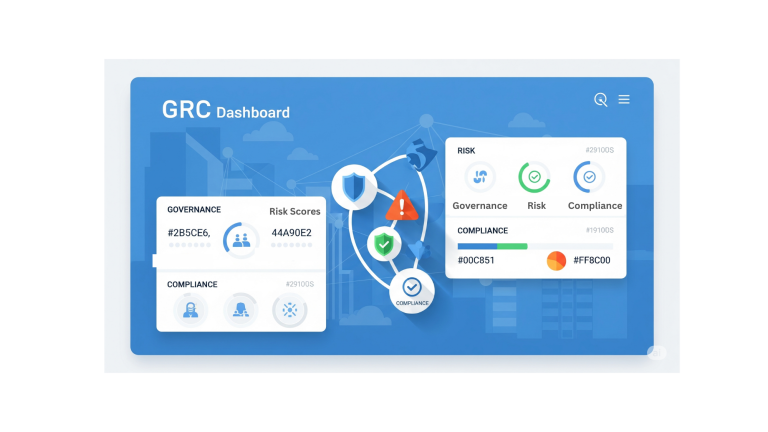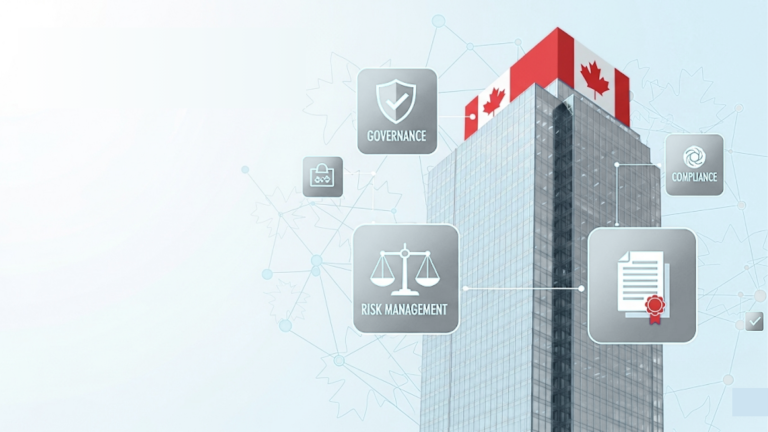Canadian healthcare organizations implementing essential healthcare regulatory compliance requirements spend an average of $2.1 million annually, yet those following industry best practices reduce regulatory violations by 73% and cut compliance costs by 35%. According to the Privacy Commissioner of Canada’s latest annual report, healthcare organizations accounted for 28% of all privacy breach investigations in 2024, highlighting the critical need for robust compliance frameworks.
The complexity of overlapping federal and provincial requirements creates significant challenges for healthcare organizations across Canada. Many struggle to balance mandatory compliance obligations with operational efficiency, often missing opportunities to implement proven best practices that reduce both risk and costs. This comprehensive guide addresses the essential requirements every Canadian healthcare organization must meet while providing actionable best practices for effective implementation within a broader GRC compliance framework.
Essential Healthcare Regulatory Compliance Requirements in Canada
Healthcare regulatory compliance in Canada encompasses the mandatory adherence to federal, provincial, and industry-specific laws designed to protect patient safety, privacy, and healthcare system integrity. Essential requirements include federal legislation like the Personal Information Protection and Electronic Documents Act (PIPEDA), provincial health information acts, and industry standards that govern how healthcare organizations collect, use, and protect sensitive health information.
The Canadian healthcare system operates under a complex jurisdictional framework where federal and provincial governments share regulatory authority. Federal requirements apply to organizations operating across provincial boundaries or handling federally regulated health programs. Provincial requirements govern healthcare delivery within specific provinces, creating a layered compliance environment that organizations must navigate carefully.
Key regulatory stakeholders include Health Canada, which oversees federal health regulations; provincial health authorities that enforce local compliance standards; and accreditation bodies like Accreditation Canada that establish quality and safety benchmarks. Understanding these essential requirements forms the foundation for any effective healthcare compliance program.
The distinction between mandatory requirements and voluntary best practices is crucial for resource allocation and risk management. While requirements represent legal obligations with potential penalties for non-compliance, best practices offer opportunities to exceed minimum standards and achieve competitive advantages through operational excellence.
Connection to broader organizational GRC requirements frameworks helps healthcare organizations integrate compliance efforts with enterprise risk management, ensuring coordinated approaches to regulatory obligations across all business functions while avoiding duplicated efforts and conflicting priorities.
Who Must Meet Healthcare Compliance Requirements in Canada?
Public healthcare institutions including hospitals, regional health authorities, and publicly funded clinics face the most comprehensive mandatory requirements. These organizations must comply with both federal privacy legislation and provincial health information acts, plus meet specific funding and operational requirements tied to public healthcare delivery.
Private healthcare providers and practitioners have essential compliance obligations that vary based on their scope of practice and patient populations served. Private clinics, specialty practices, and independent practitioners must meet provincial licensing requirements, privacy obligations, and professional standards established by their respective colleges and regulatory bodies.
Digital health companies and telehealth platforms encounter emerging requirements as governments update regulations to address technological advances. These organizations must navigate privacy laws, professional practice standards, and evolving regulations governing remote healthcare delivery and digital health records management.
Healthcare technology vendors and cloud service providers face third-party requirements when handling protected health information on behalf of healthcare organizations. These requirements include contractual obligations, technical safeguards, and compliance with both federal and provincial privacy laws depending on data flows and storage locations.
Research institutions conducting health-related studies must meet research compliance requirements including ethics board approvals, participant consent protocols, and data protection standards. These requirements vary based on funding sources, research scope, and participant populations involved in studies.
Pharmaceutical companies and medical device manufacturers have industry-specific requirements governed by Health Canada regulations covering product safety, efficacy testing, and post-market surveillance. These organizations must also comply with privacy laws when collecting patient data for research or adverse event reporting.
Third-party healthcare service providers and consultants face contractual requirements established by their healthcare organization clients. These requirements typically include privacy training, security protocols, and compliance with all applicable regulations affecting the client organization.
Provincial versus federal jurisdiction breakdown shows that privacy requirements often overlap, with organizations needing to comply with the most stringent applicable standard. Understanding jurisdiction-specific requirements prevents compliance gaps and ensures comprehensive regulatory coverage.
Key Canadian Healthcare Compliance Requirements & Standards
Federal Requirements form the baseline for healthcare compliance across Canada. The Personal Information Protection and Electronic Documents Act (PIPEDA) establishes core privacy obligations for organizations handling personal health information in commercial activities or across provincial boundaries. The Canada Health Act sets principles for publicly funded healthcare, while the Food and Drugs Act governs pharmaceutical and medical device safety standards.
Provincial Requirements add specific obligations through provincial health information acts such as Ontario’s Personal Health Information Protection Act (PHIPA), Alberta’s Health Information Act (HIA), and British Columbia’s Personal Information Protection Act (PIPA). These acts establish detailed privacy requirements, consent protocols, and breach notification procedures that often exceed federal minimums.
Accreditation Requirements from Accreditation Canada provide professional compliance standards that many healthcare organizations adopt voluntarily but increasingly face as funding or partnership requirements. College of Physicians requirements establish professional practice standards that individual practitioners must meet for licensing and practice privileges.
Industry Standards including HL7 FHIR for health information exchange and ISO 27001 for information security management create technical requirements for healthcare technology systems. These standards ensure interoperability, security, and quality in healthcare information management while supporting compliance with broader regulatory obligations.
Emerging Requirements under the Digital Charter Implementation Act and developing AI governance frameworks will create new compliance obligations for healthcare organizations adopting artificial intelligence and advanced digital technologies. Early preparation for these requirements helps organizations maintain compliance as regulations evolve.
Cross-border Requirements including GDPR compliance for international data transfers affect healthcare organizations sharing information with European entities or treating European patients. These requirements add complexity to data governance and require careful attention to consent, data processing agreements, and cross-border transfer safeguards.
Expert compliance specialists emphasize the importance of distinguishing between essential mandatory requirements and optional standards when developing compliance programs. This distinction helps organizations prioritize resources and ensure critical obligations receive appropriate attention while identifying opportunities for competitive differentiation through voluntary standard adoption.
Privacy & Data Protection Requirements: Canadian Healthcare Best Practices
Essential Requirements under PIPEDA and provincial health information privacy acts create a complex compliance landscape where organizations must often meet the most stringent applicable standard. Federal PIPEDA applies to commercial health activities and interprovincial information flows, while provincial acts govern healthcare delivery within provinces, creating overlapping jurisdictions that require careful navigation.
Best Practice implementation of consent requirements and patient rights under Canadian law involves developing clear consent processes that exceed minimum legal standards while remaining practical for healthcare operations. Leading organizations implement tiered consent systems that allow patients granular control over information use while maintaining operational efficiency for routine healthcare activities.
Compliance Requirements for data breach notification vary significantly between federal and provincial jurisdictions, with timeline requirements ranging from 24 hours to 30 days depending on applicable legislation and breach circumstances. Organizations must understand applicable notification requirements for regulatory authorities, affected individuals, and in some cases, media outlets when breaches meet specific thresholds.
Best Practice approaches to cross-border data transfer restrictions and safeguards implementation involve comprehensive data mapping, vendor due diligence, and contractual protections that exceed minimum legal requirements. Successful organizations implement privacy by design principles that consider data residency, transfer limitations, and access controls during system design phases rather than retrofit compliance measures.
Technical Requirements for cloud storage and third-party processor compliance obligations include detailed contractual provisions, technical safeguards, and ongoing monitoring requirements. Organizations must ensure service providers meet applicable privacy and security standards while maintaining appropriate oversight of data processing activities conducted on their behalf.
Best Practice telehealth and digital health privacy implementation strategies address the unique challenges of remote healthcare delivery including consent verification, secure communications, and identity authentication. Leading organizations develop comprehensive telehealth privacy frameworks that balance patient convenience with regulatory compliance and security requirements.
Operational Requirements for record retention and disposal include mandatory timelines that vary by province and record type, with some requirements extending decades for certain healthcare information. Organizations must implement systematic records management that ensures compliance with retention requirements while enabling secure disposal when retention periods expire.
Best Practice privacy impact assessment and risk management approaches involve regular systematic reviews of information handling practices, technology implementations, and business process changes. Successful organizations integrate privacy impact assessments into project management and business process improvement initiatives, ensuring privacy considerations inform decision-making before implementation rather than reactively addressing compliance issues.
Healthcare Compliance Requirements: Cost Analysis & Budget Best Practices (2025)
Baseline Requirements for compliance costs vary significantly by organization size and complexity in the Canadian market. Small healthcare practices typically spend $150,000-$300,000 annually on essential compliance activities, while large hospital systems invest $2-5 million yearly in comprehensive compliance programs. These baseline costs cover mandatory training, documentation, audit activities, and essential technology requirements that organizations cannot avoid.
Best Practice optimization strategies for initial setup versus ongoing operational costs focus on front-loading investments in robust systems and processes that reduce long-term operational expenses. Organizations that invest 60-70% of their compliance budget in the first two years on comprehensive program development typically achieve 25-35% lower ongoing costs compared to those that implement minimal initial programs requiring constant reactive improvements.
Resource Requirements for internal staffing include mandatory compliance officer functions, specialized privacy expertise, and ongoing training coordination. Essential staffing typically requires 0.5-1.0 FTE per 100 healthcare providers for basic compliance coordination, with additional specialized roles for large organizations handling complex regulatory requirements or high-risk activities like research or cross-border data transfers.
Best Practice external consultant and audit fee negotiation strategies leverage competitive procurement processes and long-term relationship development to optimize professional service costs. Successful organizations establish preferred provider relationships, negotiate multi-year service agreements, and invest in internal capabilities that reduce dependence on external services for routine compliance activities.
Technology Requirements for essential compliance systems include privacy management platforms, security monitoring tools, and documentation management systems. Baseline technology investments typically range from $50,000-$200,000 for small organizations to $500,000-$2 million for large hospital systems, with annual maintenance and licensing costs representing 15-25% of initial investment.
Best Practice cost-benefit analysis comparing reactive penalties versus proactive compliance investment demonstrates significant ROI for comprehensive compliance programs. Organizations with mature compliance programs report 60-80% fewer regulatory violations and 40-50% lower total compliance costs when including penalty avoidance, compared to organizations with minimal reactive compliance approaches.
Funding Requirements access through provincial funding programs and compliance support resources can offset 20-40% of compliance costs for eligible organizations. Best practice approaches involve early engagement with funding programs, comprehensive grant application processes, and coordination with industry associations to maximize available support while meeting program requirements.
Best Practice multi-year budget planning and cost forecasting methodologies help organizations anticipate regulatory changes, technology refresh cycles, and capability development needs. Successful organizations develop rolling three-year compliance budget plans that align with strategic planning cycles and accommodate emerging regulatory requirements while maintaining stable operational funding.
Healthcare Compliance Implementation: Essential Requirements & Best Practice Framework
Phase 1 Requirements for compliance readiness assessment and gap analysis establish mandatory baseline understanding of current compliance status, applicable regulatory requirements, and organizational readiness for compliance program development. Essential assessment components include regulatory inventory, current practice documentation, and stakeholder capability evaluation across all organizational functions handling health information.
Best Practice proven assessment methodologies involve structured interviews with key stakeholders, systematic documentation review, and risk-based prioritization of compliance gaps. Leading organizations engage external compliance expertise during assessment phases to ensure objective evaluation and comprehensive identification of regulatory requirements and implementation challenges.
Phase 2 Requirements for governance structure and accountability framework setup include designated compliance officer appointment, compliance committee establishment, and clear reporting relationships that ensure appropriate organizational authority and resources for compliance program success. Essential governance elements include board-level oversight, executive sponsorship, and cross-functional coordination mechanisms.
Best Practice effective compliance officer selection and committee structure optimization focus on individuals with appropriate healthcare experience, regulatory knowledge, and organizational influence to drive compliance culture development. Successful structures include diverse committee membership, clear decision-making authority, and regular communication channels that connect compliance efforts with operational management.
Phase 3 Requirements for policy development and documentation include comprehensive written policies covering all applicable regulatory requirements, detailed procedures for routine compliance activities, and standards of conduct that establish clear expectations for all organizational members. Mandatory documentation elements include privacy policies, breach response procedures, and training requirements.
Best Practice policy template utilization and stakeholder review processes ensure policies address organization-specific requirements while maintaining consistency with regulatory standards and industry practices. Leading organizations implement collaborative policy development processes that engage subject matter experts, operational leaders, and compliance specialists to create practical, implementable policies.
Phase 4 Requirements for staff training and awareness program implementation include mandatory initial training for all personnel handling health information, role-specific training for specialized functions, and ongoing training to address regulatory updates and emerging compliance requirements. Essential training elements include privacy awareness, security protocols, and incident reporting procedures.
Best Practice engagement strategies and competency measurement approaches use interactive training methods, scenario-based learning, and regular competency assessments to ensure training effectiveness. Successful programs implement microlearning approaches, gamification elements, and recognition systems that encourage active participation and knowledge retention.
Phase 5 Requirements for technology systems and security controls deployment include essential technical safeguards for electronic health information protection, access controls that limit information access to authorized users, and audit logging capabilities that support compliance monitoring and investigation activities.
Best Practice technology selection criteria and integration methodologies prioritize solutions that address multiple compliance requirements while supporting operational efficiency and user adoption. Leading organizations implement comprehensive vendor evaluation processes, pilot testing programs, and phased deployment strategies that minimize operational disruption.
Phase 6 Requirements for monitoring, auditing, and continuous improvement processes include regular compliance assessments, systematic identification of compliance gaps, and corrective action implementation that addresses identified deficiencies. Essential monitoring elements include ongoing risk assessment, performance measurement, and regulatory update tracking.
Best Practice audit scheduling, reporting, and improvement cycle optimization establish systematic approaches to compliance evaluation that provide regular feedback on program effectiveness while identifying opportunities for enhancement. Successful organizations implement quarterly compliance reviews, annual comprehensive assessments, and continuous improvement processes that adapt to changing regulatory requirements.
Phase 7 Requirements for incident response and breach management procedures include mandatory breach identification processes, notification procedures that meet regulatory timeline requirements, and investigation capabilities that support regulatory compliance and organizational learning from compliance incidents.
Best Practice response team coordination and communication strategies ensure rapid, effective responses to compliance incidents while minimizing operational disruption and regulatory exposure. Leading organizations implement cross-functional response teams, pre-approved communication templates, and post-incident review processes that strengthen overall compliance capabilities.
Common Healthcare Compliance Failures: Requirements Gaps & Best Practice Solutions
Requirements Gap: Misunderstanding federal versus provincial jurisdiction requirements creates compliance vulnerabilities when organizations assume single-jurisdiction compliance suffices for complex operations. Many organizations fail to recognize that privacy requirements often overlap, requiring compliance with the most stringent applicable standard rather than choosing between federal and provincial requirements.
Best Practice Solution: Jurisdiction mapping and compliance matrix development strategies help organizations identify all applicable requirements and ensure comprehensive coverage. Successful approaches include regulatory requirement inventories, jurisdiction-specific compliance checklists, and regular legal review of applicable standards as operations change or expand.
Requirements Gap: Inadequate vendor management and third-party risk assessment occurs when organizations focus on direct compliance while neglecting contractual relationships that create shared compliance obligations. Many organizations lack systematic approaches to vendor due diligence, ongoing monitoring, and contractual compliance requirements.
Best Practice Solution: Vendor compliance verification and ongoing monitoring methodologies establish systematic approaches to third-party risk management that protect organizations from vendor-related compliance failures. Leading practices include vendor compliance questionnaires, regular compliance certifications, audit rights provisions, and termination procedures for non-compliant vendors.
Requirements Gap: Poor incident response and breach notification procedures often result from inadequate preparation, unclear responsibility assignment, and insufficient understanding of complex notification requirements that vary by jurisdiction and breach type. Many organizations discover procedural gaps during actual incidents when rapid response is critical.
Best Practice Solution: Response team training and communication protocol optimization ensure organizations can respond effectively to compliance incidents while meeting regulatory requirements and minimizing operational disruption. Successful approaches include regular incident response exercises, pre-approved notification templates, and cross-functional response teams with clear roles and responsibilities.
Requirements Gap: Insufficient staff training and awareness programs fail to create organization-wide compliance culture or provide personnel with practical knowledge needed for daily compliance decisions. Many organizations implement generic training programs that fail to address role-specific requirements or organizational compliance challenges.
Best Practice Solution: Role-based training design and competency measurement approaches ensure training addresses specific compliance requirements while engaging participants in meaningful learning experiences. Leading practices include job-specific training modules, scenario-based learning exercises, and regular competency assessments that measure understanding and application.
Requirements Gap: Technology implementation without privacy by design principles creates compliance vulnerabilities when organizations retrofit privacy protections rather than building compliance into system architecture. Many technology projects proceed without adequate privacy impact assessment or compliance consultation during design phases.
Best Practice Solution: Privacy impact assessment integration and technical safeguard implementation ensure compliance considerations inform technology decisions from initial design through ongoing operations. Successful approaches include mandatory privacy impact assessments for technology projects, compliance team involvement in system design, and technical safeguard requirements in technology procurement processes.
Requirements Gap: Neglecting ongoing monitoring and continuous improvement allows compliance programs to become outdated as regulations evolve and organizational operations change. Many organizations implement initial compliance programs but fail to maintain currency with regulatory developments or organizational changes that affect compliance requirements.
Best Practice Solution: Automated monitoring systems and improvement cycle establishment provide systematic approaches to compliance program maintenance and enhancement. Leading practices include regulatory update tracking systems, compliance performance dashboards, and regular program reviews that identify improvement opportunities and address emerging requirements.
Requirements Gap: Inadequate documentation and audit trail management creates challenges during regulatory investigations or compliance assessments when organizations cannot demonstrate adherence to required processes or decision-making rationales. Many organizations fail to maintain systematic documentation that supports compliance demonstration.
Best Practice Solution: Documentation standardization and audit readiness maintenance strategies ensure organizations can demonstrate compliance through comprehensive, organized documentation that supports regulatory review and organizational learning. Successful approaches include standardized documentation templates, centralized document management systems, and regular documentation audits that identify and address gaps.
Healthcare Compliance Technology Requirements & Best Practice Solutions (2025 Canadian Market)
Core Requirements for Canadian GRC platform providers with healthcare modules include essential functionality for privacy management, risk assessment, policy administration, and compliance monitoring that addresses federal and provincial regulatory requirements. Essential capabilities include PIPEDA compliance support, provincial privacy law coverage, and healthcare-specific risk assessment frameworks.
Best Practice vendor evaluation criteria and selection methodologies for Canadian data residency compliance involve comprehensive assessment of vendor capabilities, compliance track records, and contractual protections that ensure ongoing regulatory compliance. Leading selection processes include detailed functionality evaluations, reference checks with similar organizations, and legal review of service agreements.
Privacy Requirements for privacy management and consent management solutions include mandatory capabilities for consent tracking, privacy preference management, and individual rights fulfillment that meet Canadian privacy law requirements. Essential functionality includes automated consent workflows, privacy request processing, and comprehensive audit trails for privacy-related activities.
Best Practice implementation strategies and user adoption optimization approaches focus on solutions that integrate with existing workflows while providing intuitive interfaces that encourage consistent use. Successful implementations include comprehensive user training, workflow integration analysis, and phased deployment strategies that minimize operational disruption.
Security Requirements for security incident and event management (SIEM) tools include essential monitoring capabilities for healthcare environments that detect potential privacy breaches, unauthorized access attempts, and system vulnerabilities. Required functionality includes real-time monitoring, automated alerting, and comprehensive logging that supports compliance investigation and reporting requirements.
Best Practice integration strategies and alert management optimization prevent alert fatigue while ensuring security teams can respond effectively to genuine threats. Leading approaches include risk-based alerting, automated response workflows, and regular tuning processes that improve detection accuracy while reducing false positives.
Documentation Requirements for documentation management and policy administration platforms include compliance documentation storage, version control, policy distribution, and acknowledgment tracking that meet regulatory documentation requirements. Essential capabilities include centralized policy management, automated distribution workflows, and comprehensive tracking of policy acknowledgments and training completion.
Best Practice workflow automation and version control best practices ensure policy management processes remain current while reducing administrative burden. Successful approaches include automated policy review cycles, stakeholder notification systems, and integration with training platforms that streamline compliance administration.
Training Requirements for training and awareness delivery systems include mandatory training tracking capabilities, competency assessment functionality, and reporting features that demonstrate compliance with regulatory training requirements. Essential functionality includes role-based training assignment, completion tracking, and competency measurement that supports regulatory compliance demonstration.
Best Practice engagement strategies and completion tracking optimization use interactive content, microlearning approaches, and recognition systems to encourage participation while providing comprehensive tracking of training effectiveness. Leading practices include gamification elements, mobile-friendly content delivery, and integration with HR systems for comprehensive training record management.
Risk Requirements for third-party risk assessment and vendor management tools include vendor oversight obligations for due diligence, ongoing monitoring, and contract management that address healthcare compliance requirements. Essential capabilities include vendor questionnaire management, risk scoring, ongoing monitoring workflows, and contract compliance tracking.
Best Practice vendor lifecycle management and continuous monitoring strategies ensure third-party relationships maintain compliance standards throughout engagement duration. Successful approaches include automated vendor monitoring, regular compliance certifications, and systematic contract review processes that identify and address compliance changes.
Evaluation Requirements for key evaluation criteria and vendor selection considerations include comprehensive assessment of Canadian compliance capabilities, data residency options, and regulatory update processes that ensure solutions remain current with evolving requirements. Essential evaluation elements include compliance feature assessment, vendor stability evaluation, and total cost of ownership analysis.
Best Practice procurement processes and contract negotiation strategies ensure vendor relationships support long-term compliance success while providing favorable commercial terms. Leading approaches include detailed service level agreements, compliance warranty provisions, and termination rights that protect organizations from vendor-related compliance failures.
Data Requirements for Canadian data residency and sovereignty compliance include vendor capabilities for in-country data storage, processing restrictions, and access controls that meet regulatory requirements for sensitive health information protection. Essential capabilities include data location transparency, sovereignty controls, and audit features that demonstrate compliance with data residency requirements.
Best Practice data governance and cross-border transfer management strategies ensure comprehensive data protection while supporting necessary business operations. Successful approaches include data classification systems, transfer approval workflows, and ongoing monitoring processes that maintain compliance with evolving data sovereignty requirements.
Conclusion
Healthcare regulatory compliance in Canada requires balancing essential federal and provincial requirements with proven best practices that optimize both compliance effectiveness and operational efficiency. Organizations that implement comprehensive requirements frameworks while adopting industry best practices achieve significantly better compliance outcomes with lower total costs compared to those using reactive, minimal compliance approaches.
Key Requirements: Federal PIPEDA compliance, provincial privacy law adherence, mandatory security safeguards, and systematic documentation represent non-negotiable baseline requirements for all Canadian healthcare organizations. Key Best Practices: Privacy by design implementation, proactive vendor management, comprehensive staff training, and continuous improvement processes distinguish leading organizations from those meeting only minimum standards.
Next Steps: Conduct comprehensive requirements assessment, develop best practice implementation roadmap, engage compliance expertise for gap analysis, and establish systematic monitoring processes that ensure ongoing compliance success. Priority actions include privacy program evaluation, vendor compliance review, staff training assessment, and technology capability gap analysis.
Leading healthcare organizations recognize that compliance excellence requires integration with broader governance, risk, and compliance frameworks that address enterprise-wide regulatory requirements while supporting operational excellence and strategic objectives.







